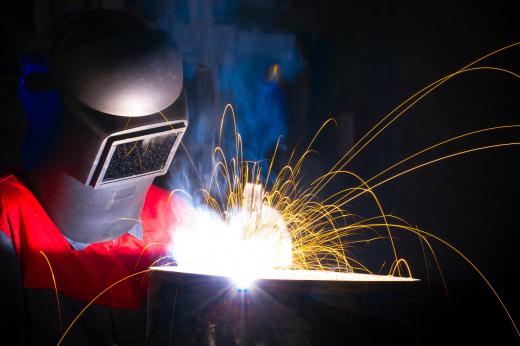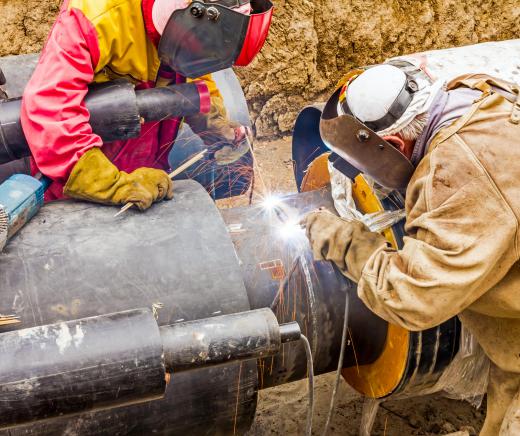A shielding gas is used during wire welding. Unlike arc welding, which uses welding rods that are covered with a flux coating, metal inert gas (MIG) and tungsten inert gas (TIG) wire welding use a shielding gas to protect the weld from contamination as it forms and cools. Typically a mix of carbon monoxide and argon gasses, the welder dispenses the proper amount of shielding gas through the welding gun as it is needed. A benefit in using a shielding gas when welding is that there is no slag left on the weld that requires chipping and cleaning like that which is found on an arc weld.
When a new wire welding machine is purchased, it does not come with a shielding gas tank. This must be purchased or rented from a gas supplier. Most welding supply stores also sell welding gasses and will be able to assist the buyer in a tank purchase. The type and mix of shielding gas required will be determined by the type of welding which will be done using the gas. For most general welding requirements, the argon gas will suffice. There are some welding situations, such as aluminum welding, that require a special mix of gas.

When welding with a shielding gas, it is important to keep the welding gun close to the work piece. The flow of gas coming from the nozzle must be kept in contact with the weld puddle. If the gas in not kept near the puddle, a weak and nonuniform weld could result. Operators should check with the manufacturer's recommendations found in the operation handbook concerning the right settings of the gas tank regulators. This will ensure a proper flow of gas throughout the welding procedure.

When welding outside in extremely windy conditions, it may be necessary to increase the flow of gas coming from the welding gun. Occasionally, the wind may blow the gas away from the weld puddle, causing contamination of the weld. This condition is rare, however, and can be corrected by keeping the welding gun a little closer to the weld puddle. It is not necessary for the shielding gas to remain focused on the weld for more than a split second as the weld is formed.
When the nozzle of the welding gun becomes fouled with weld splatter, it should be cleaned. A wire brush can be used to remove most weld splatter from the nozzle. Stubborn splatter may be picked off using a small screwdriver.
